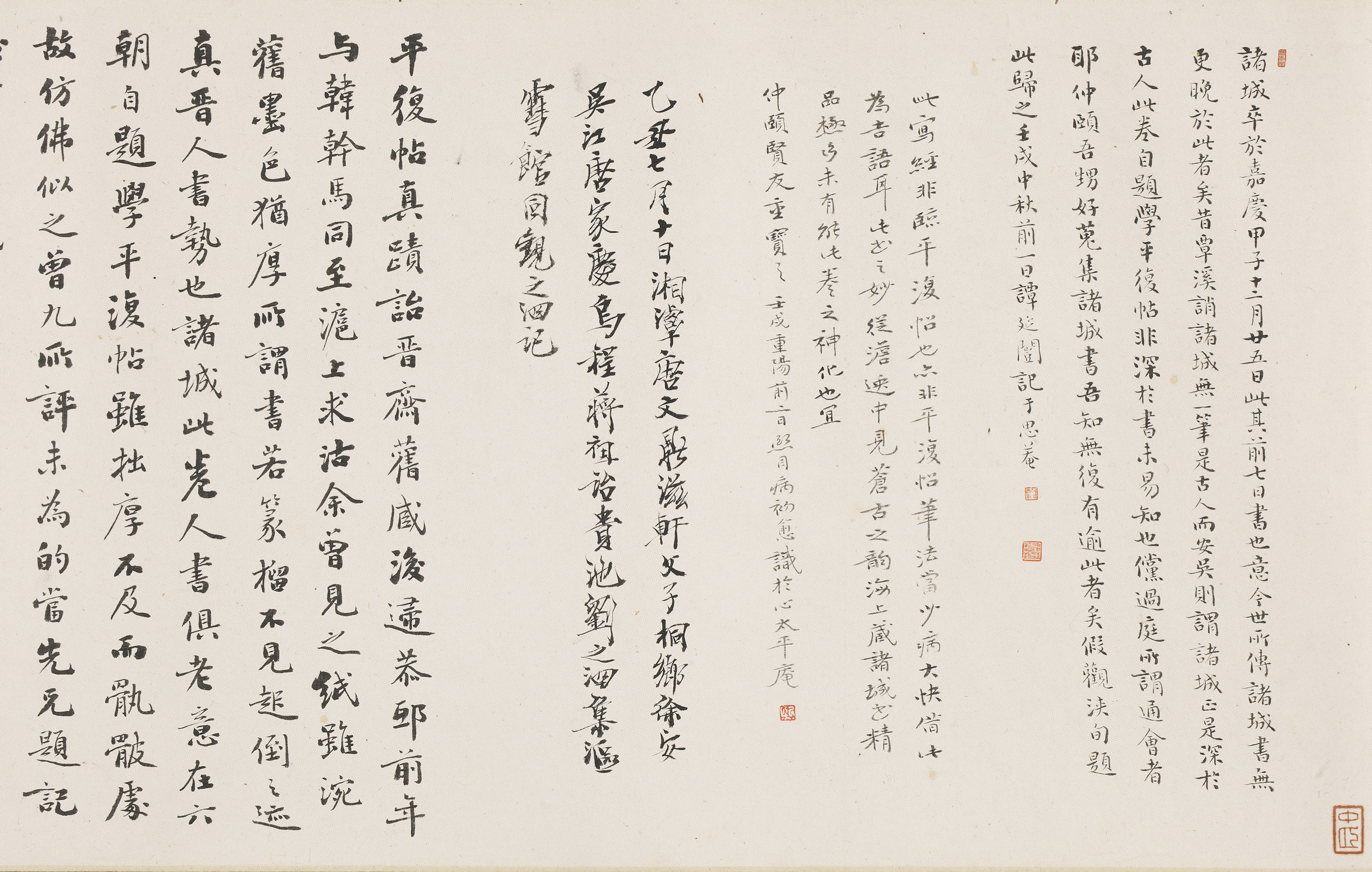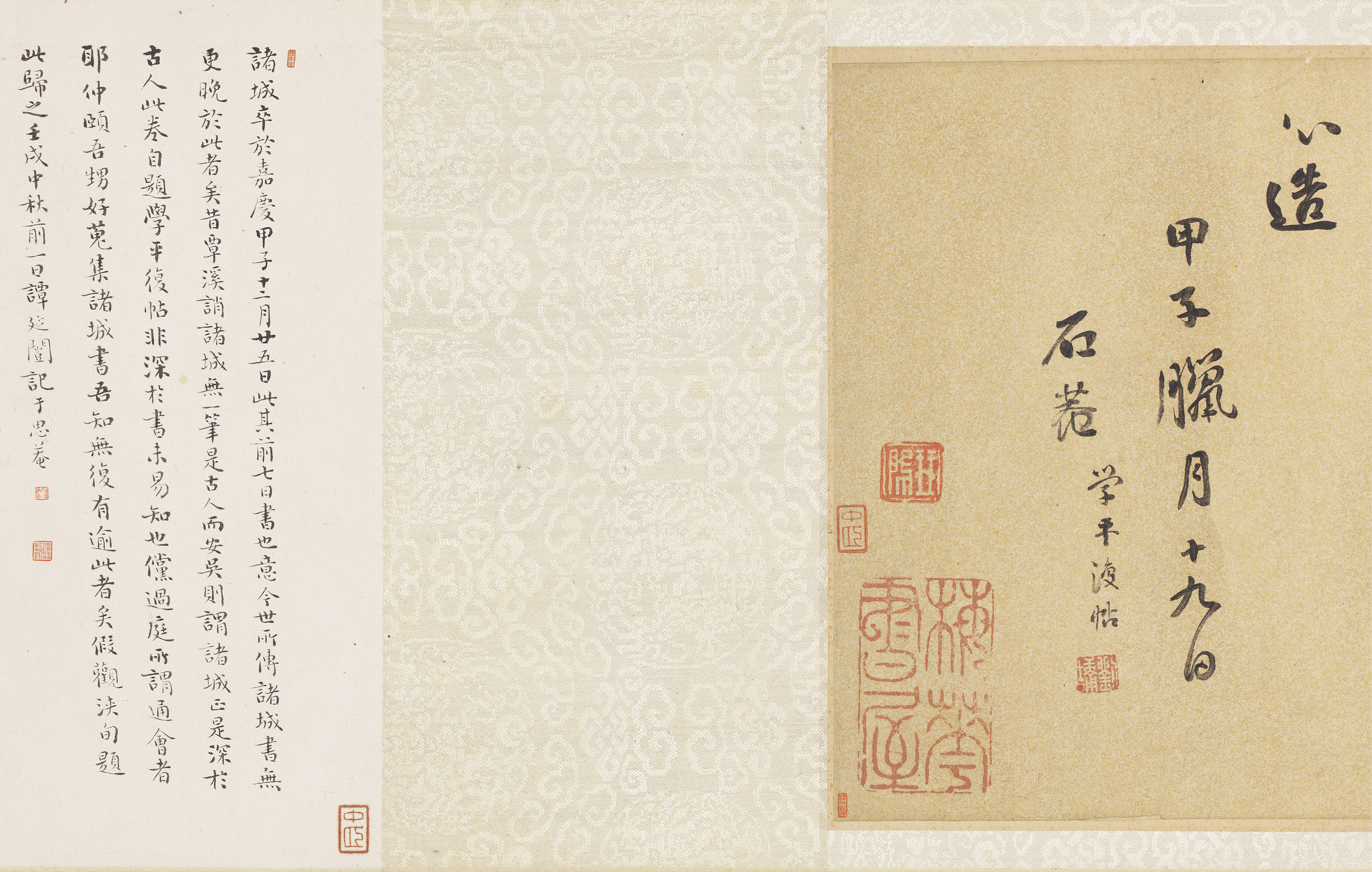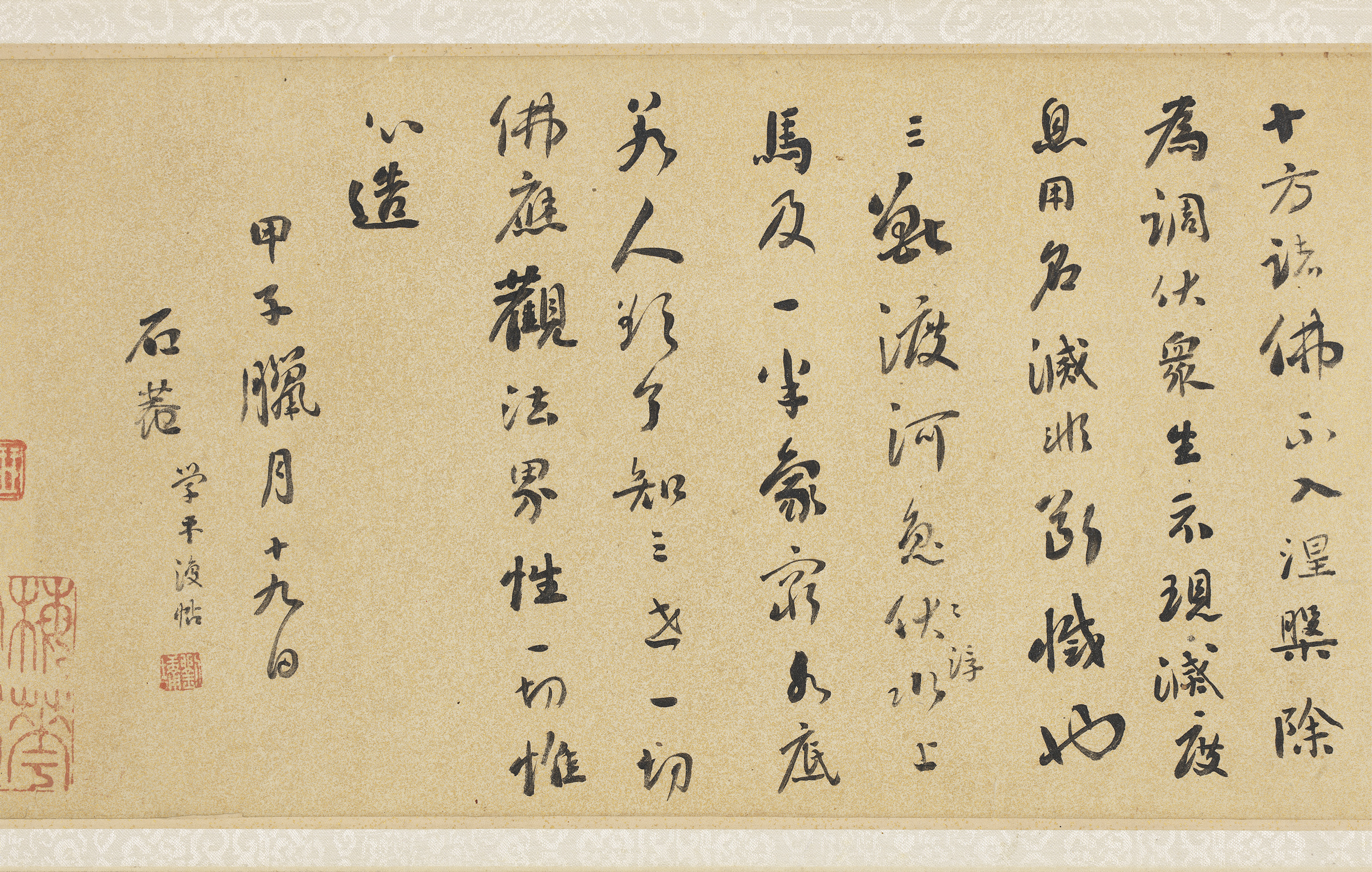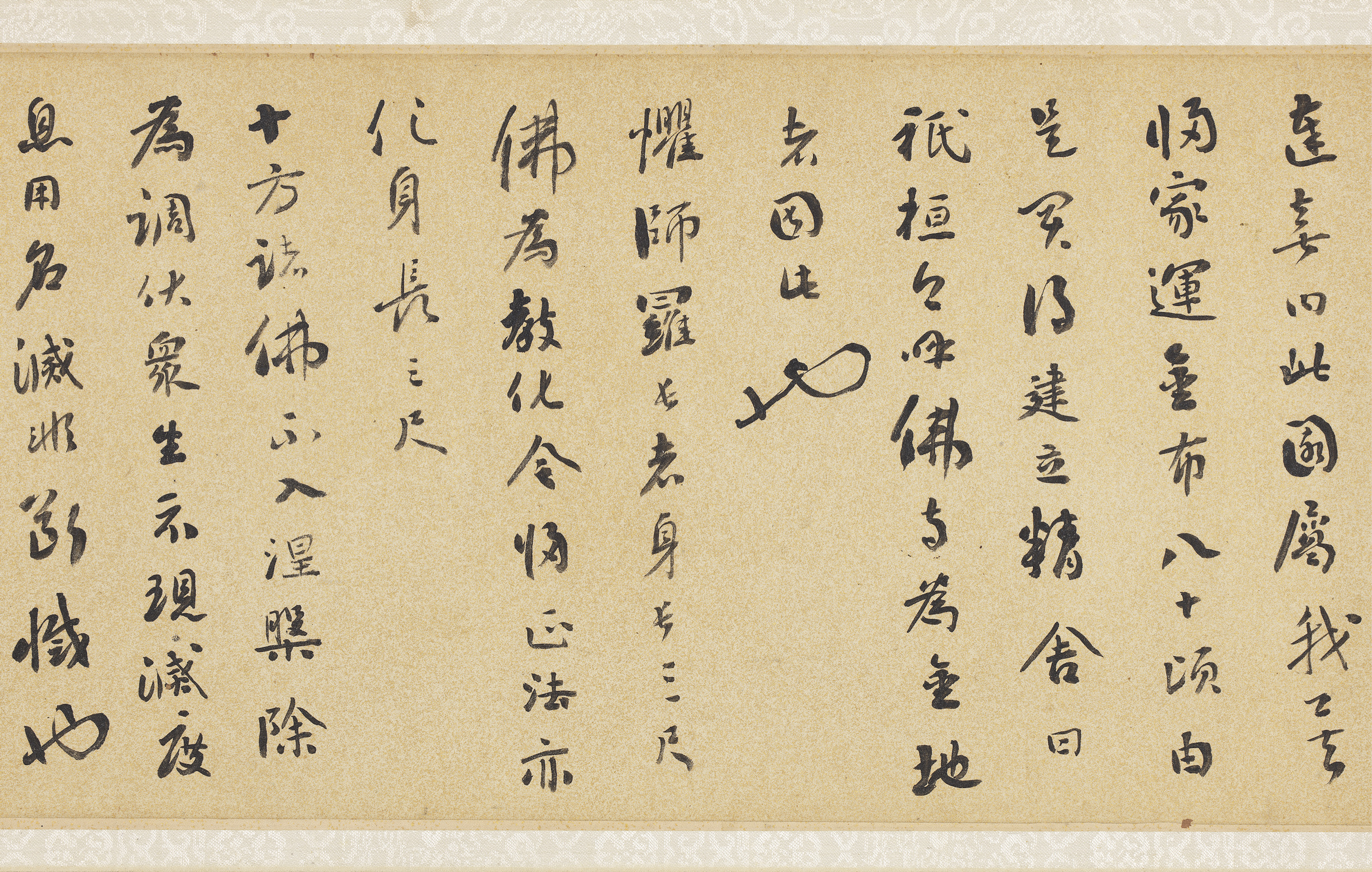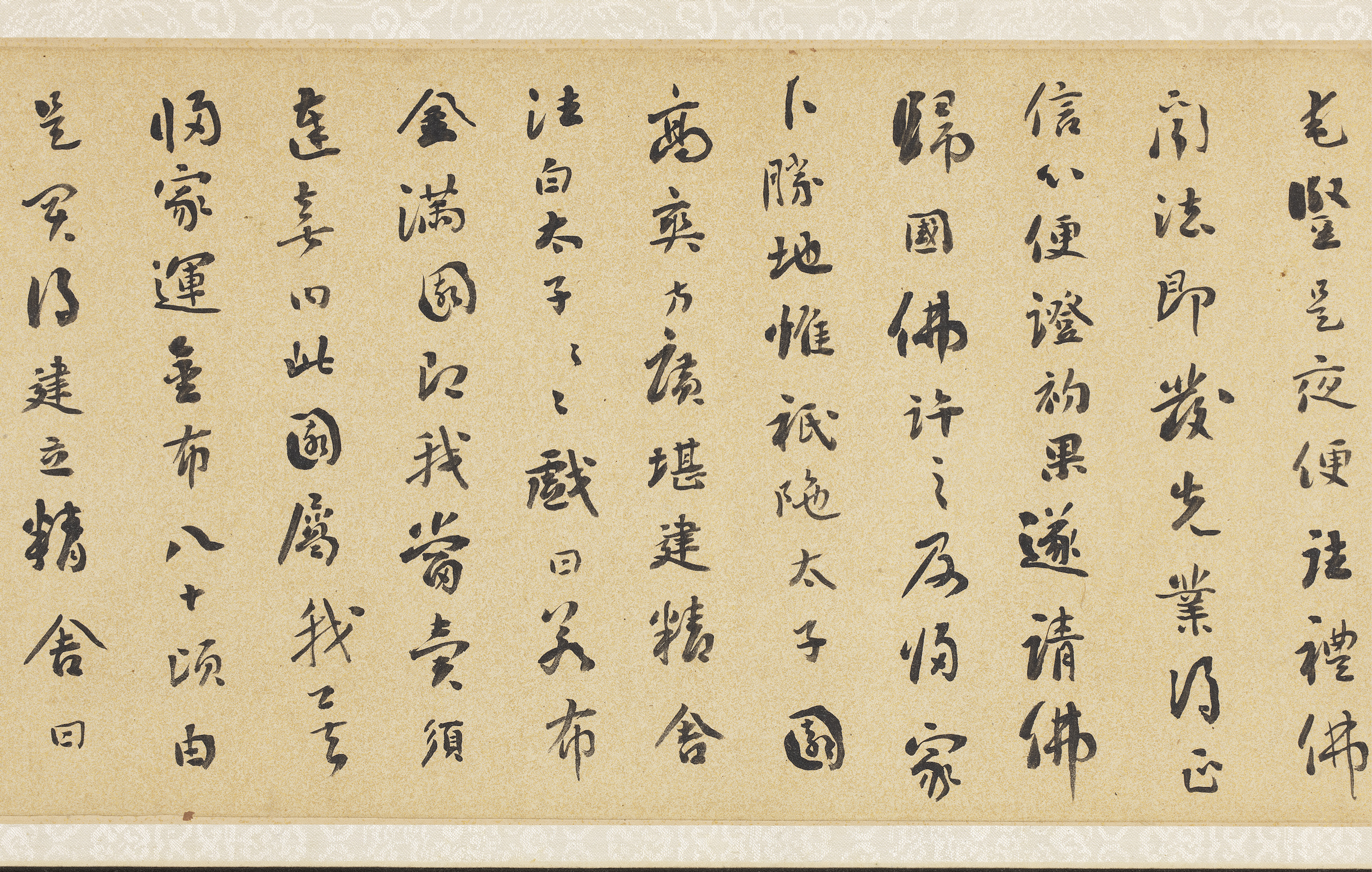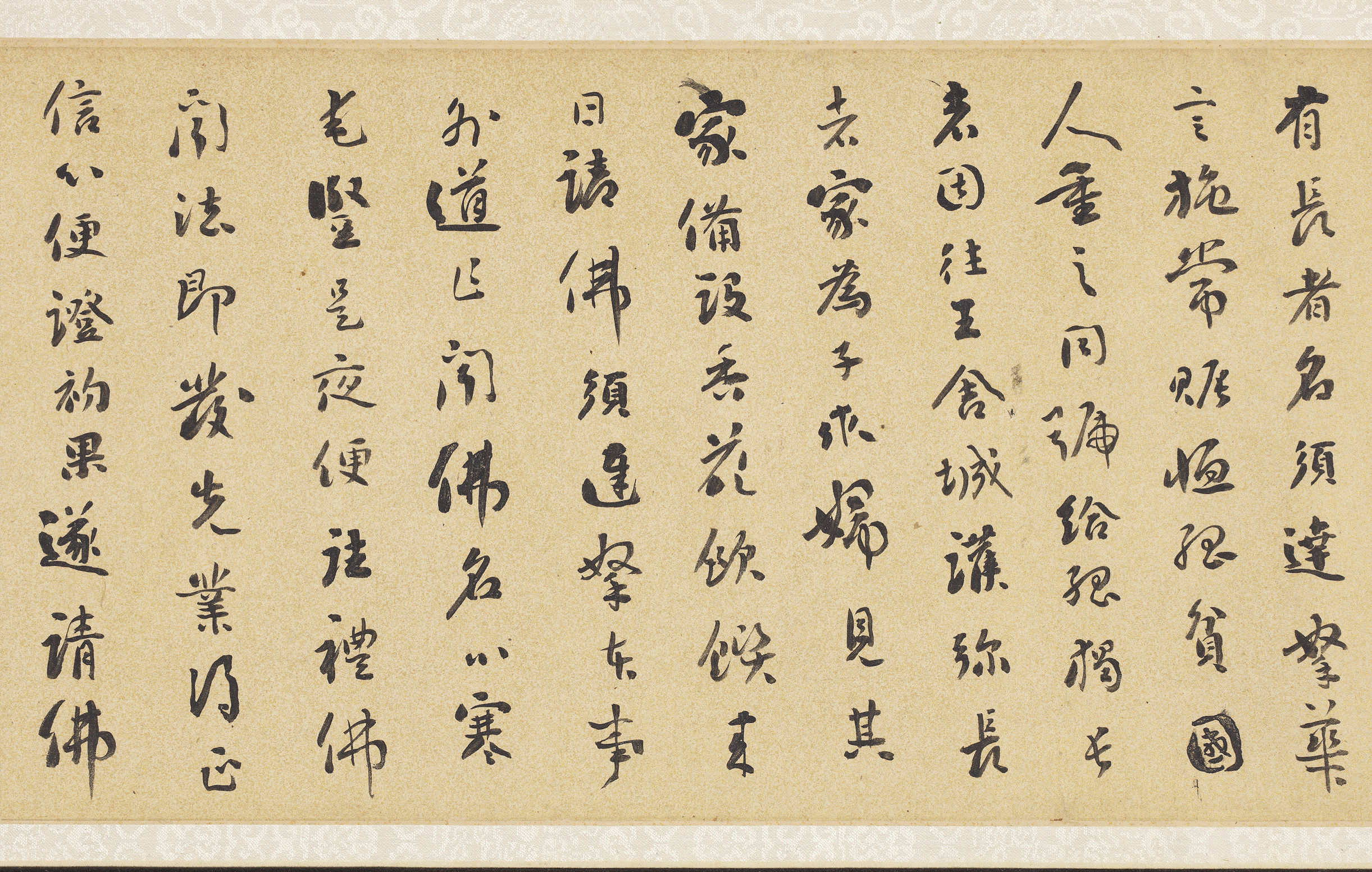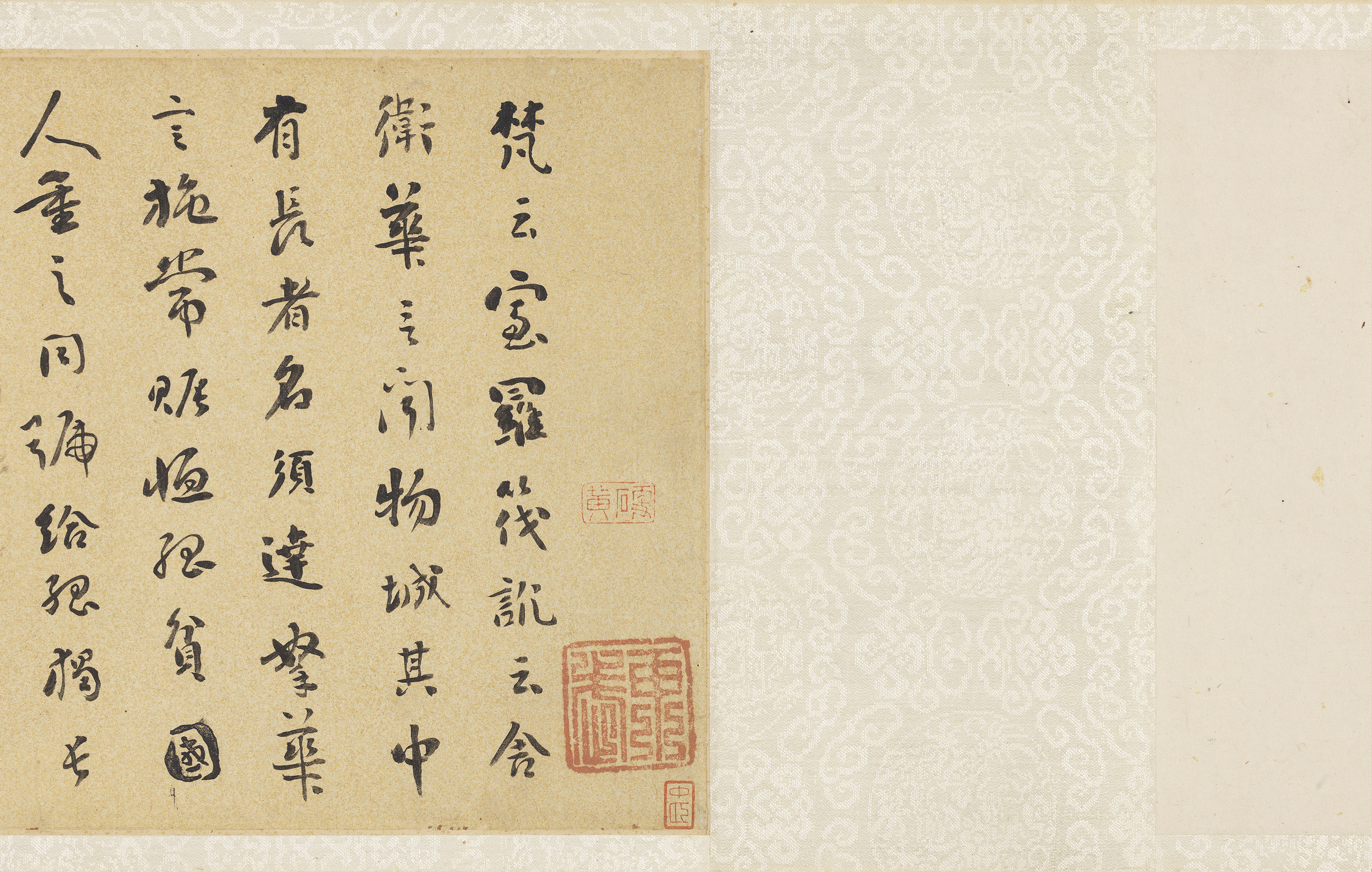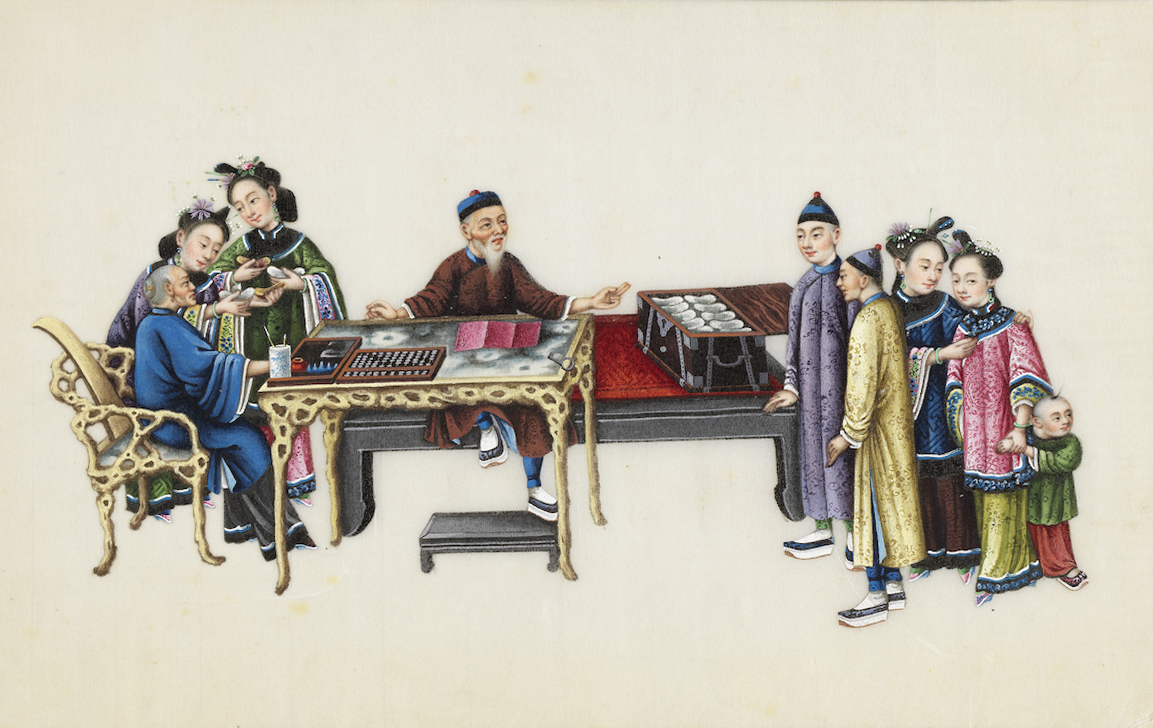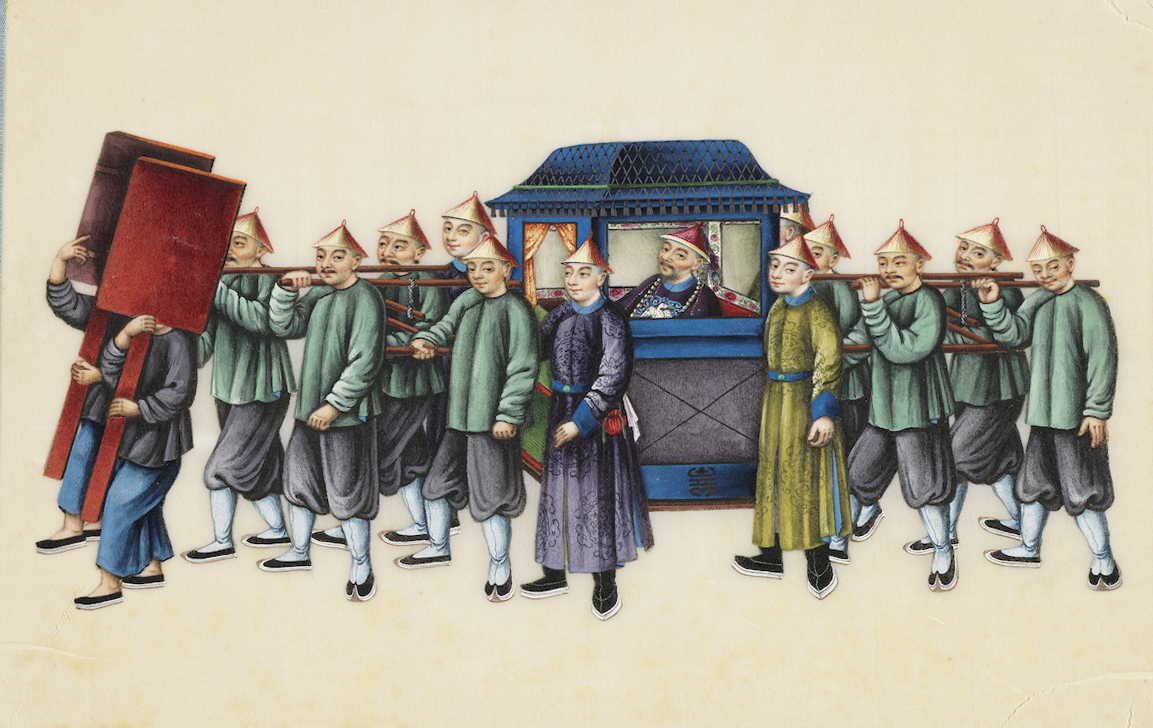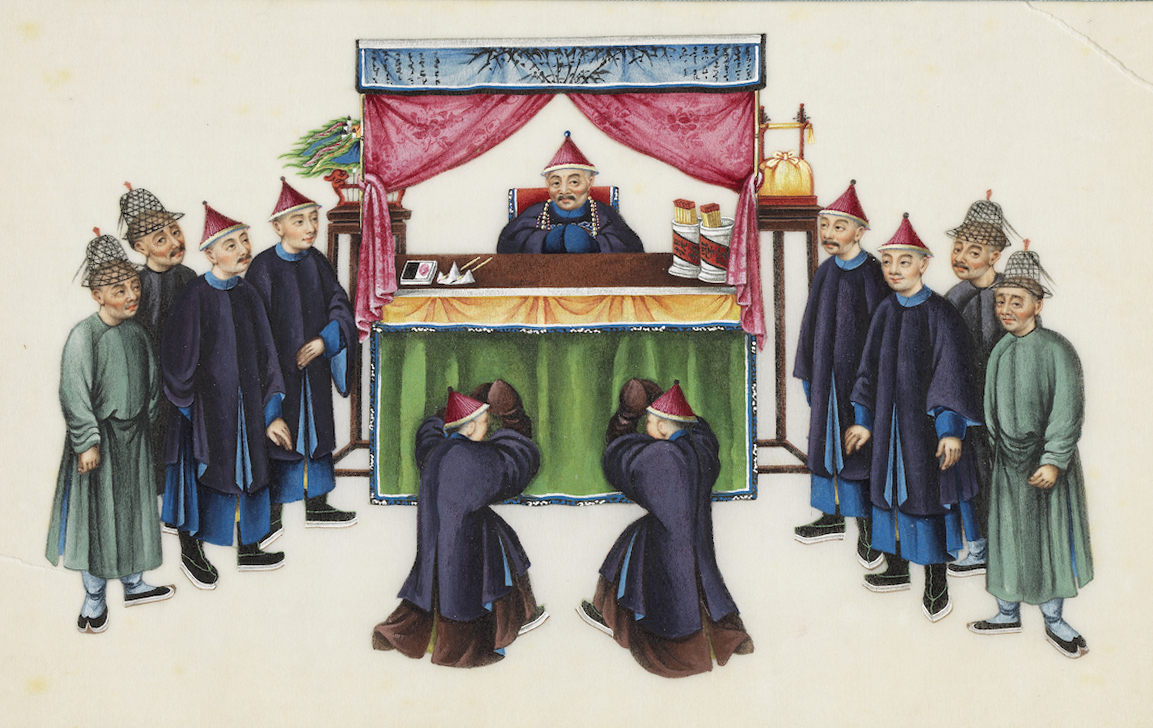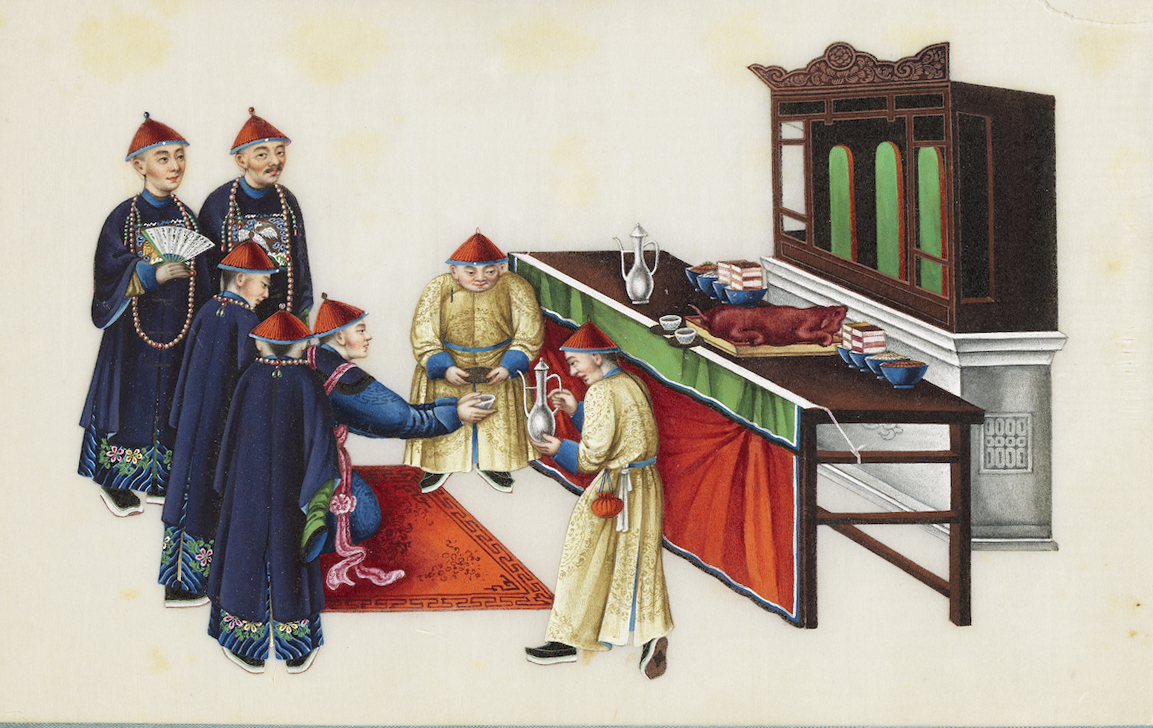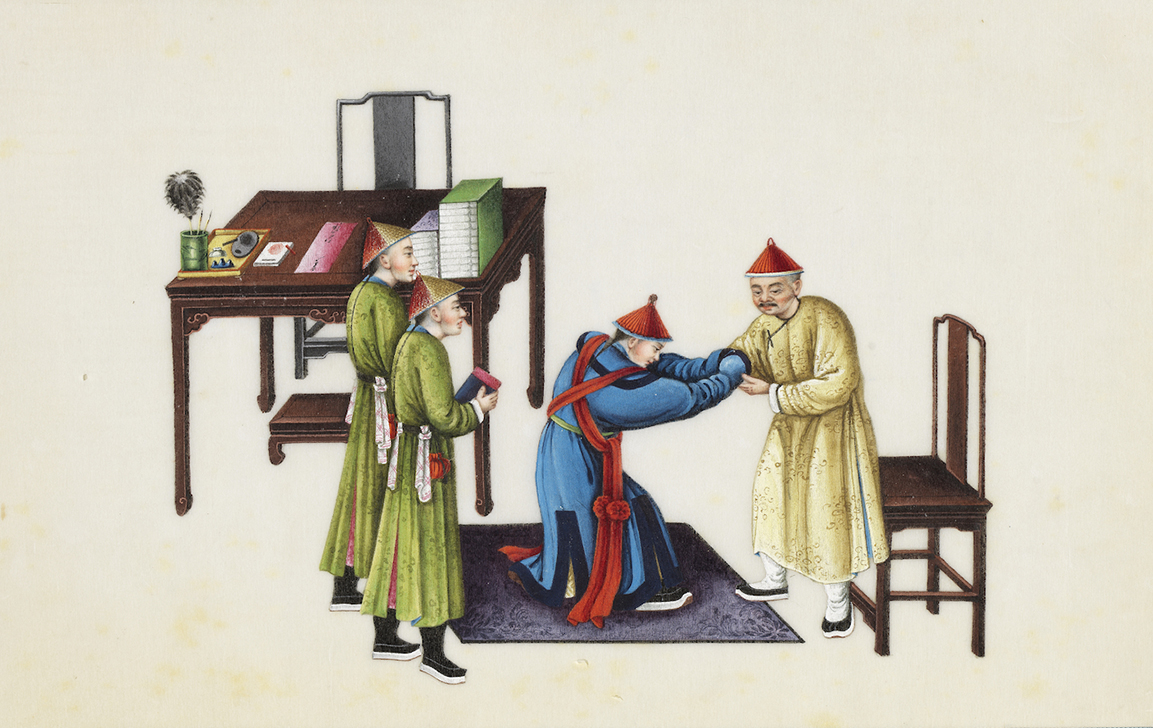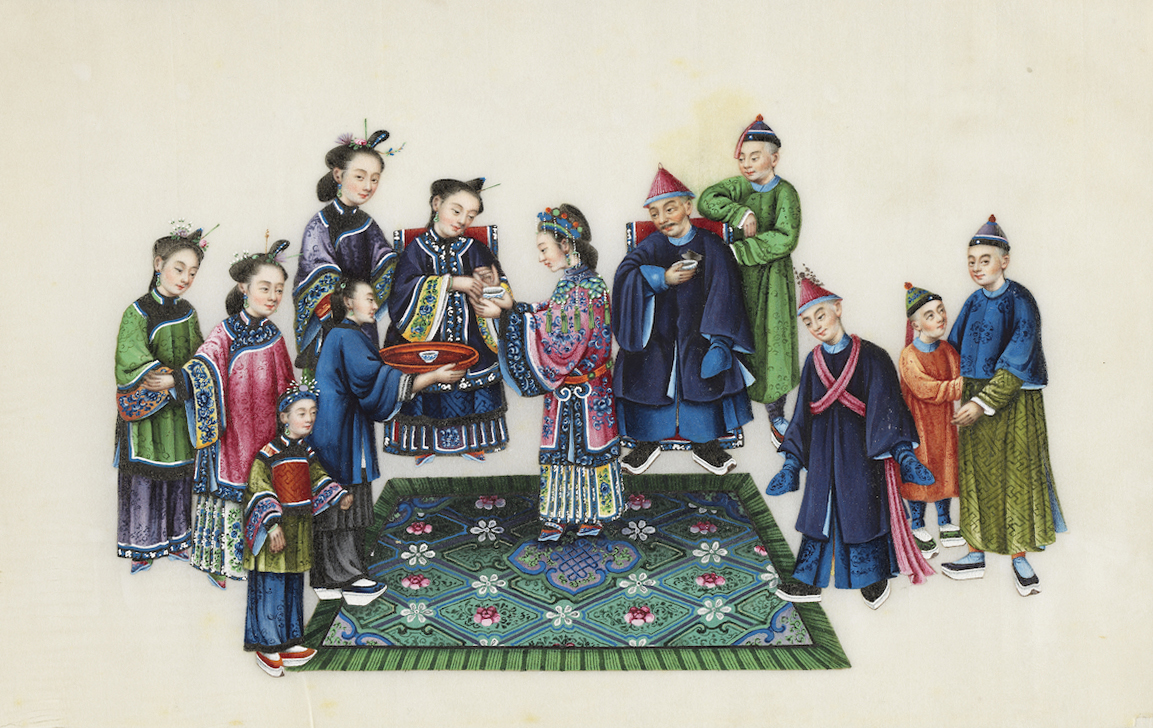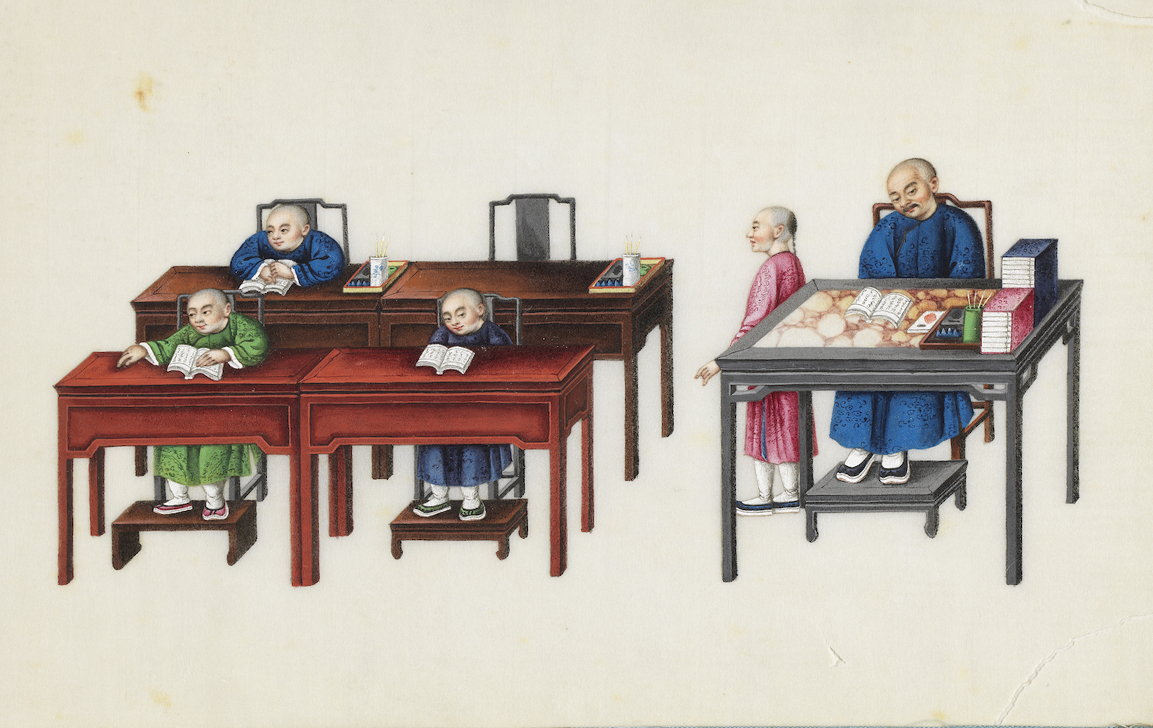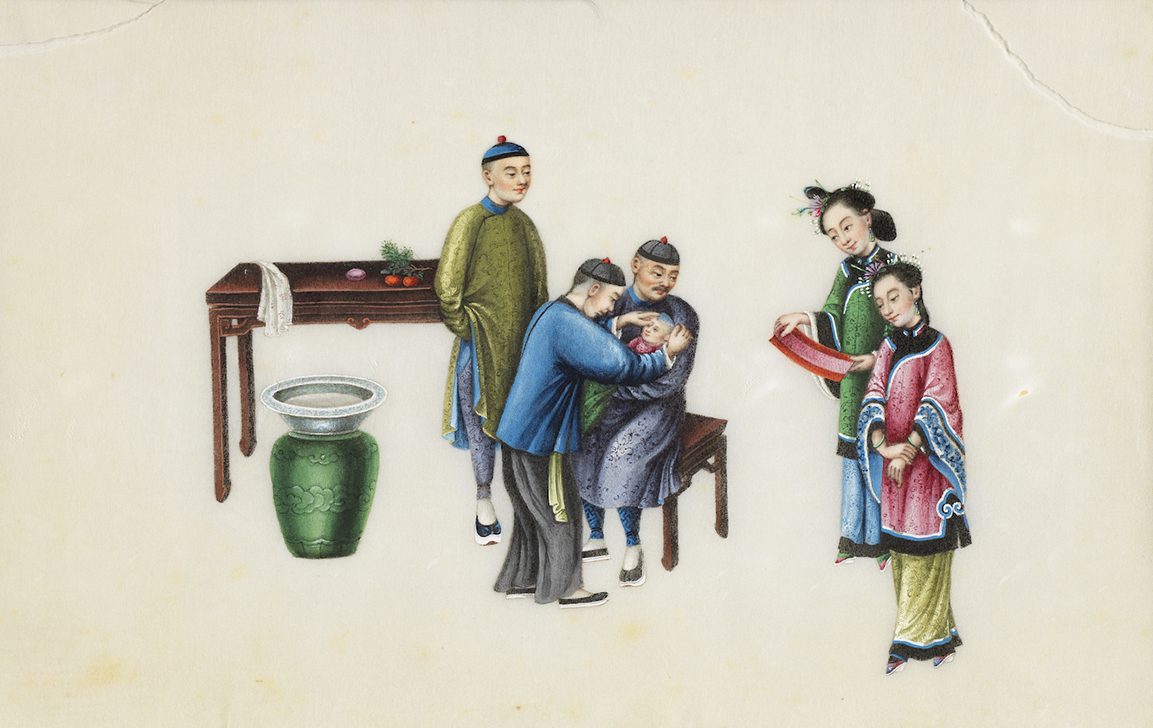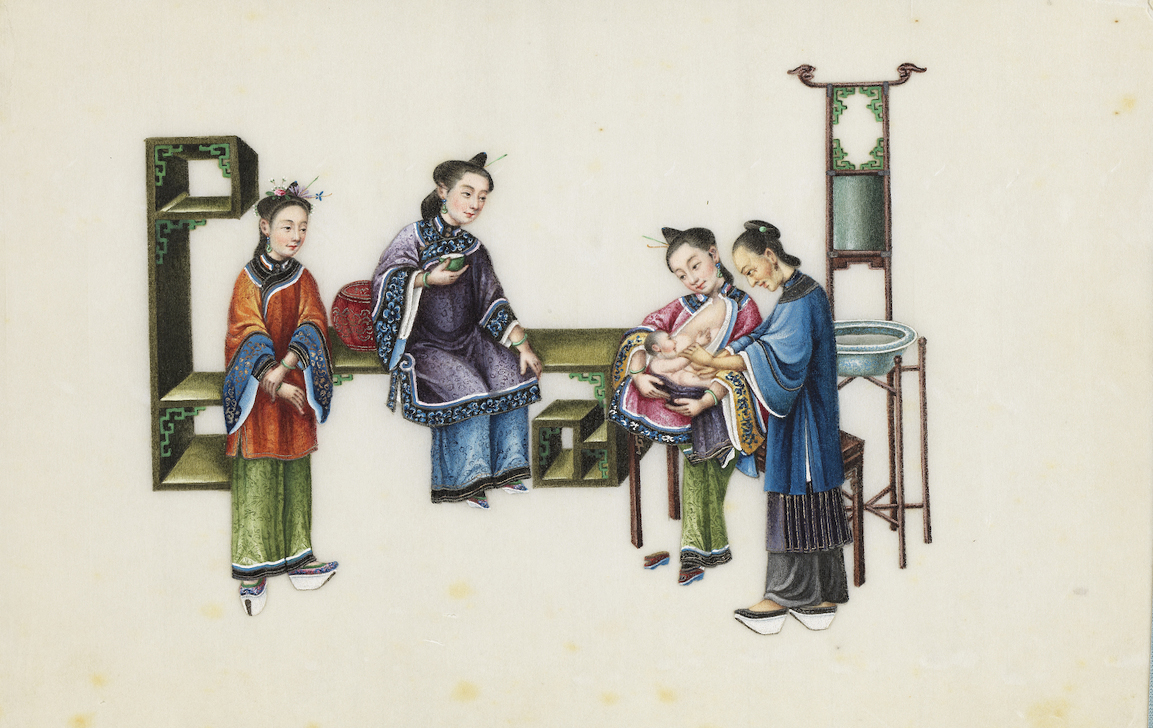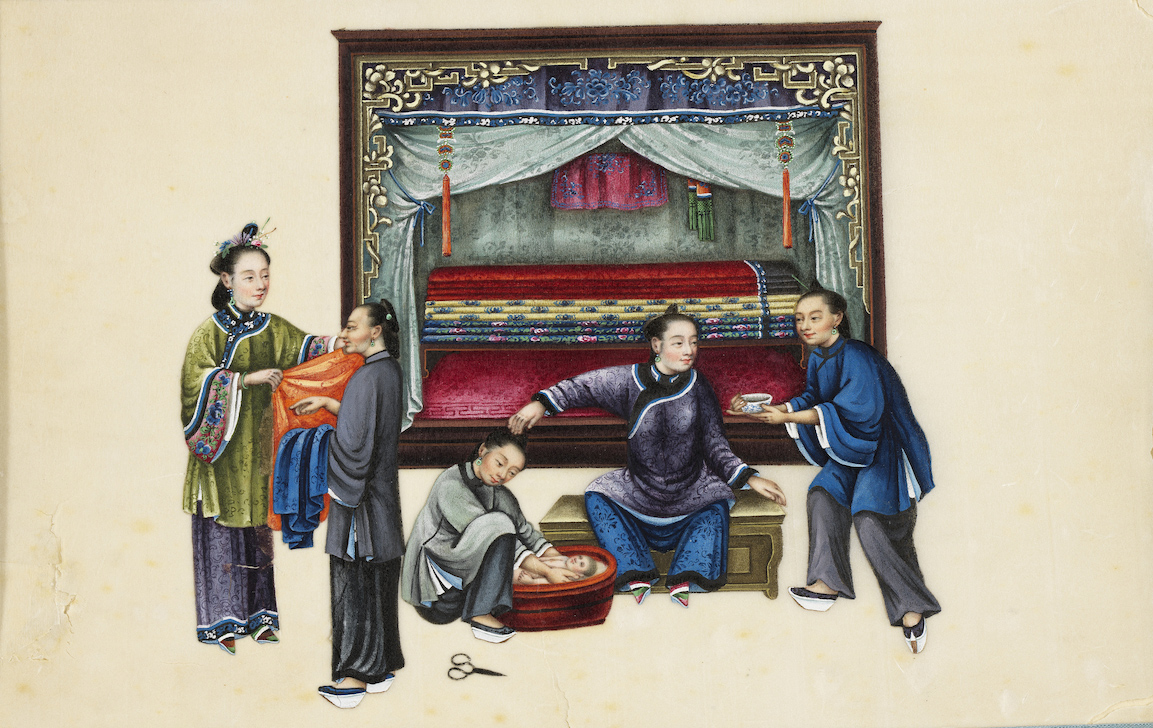Selections
-
Exquisite Calligraphy from his Later Years
- Liu Yong (1720-1805), Qing dynasty
Liu Yong (1720-1805), a native of Zhucheng in Shandong province, had the style name Chongru and the sobriquet Shi'an (Stone Hut). Known to have been a man of exemplary character, Liu was a highly accomplished calligrapher. His tendency to liberally load his brush with ink and write bold, vigorous characters earned him the moniker "the Minister of Thick Ink."
This scroll was donated by Mr. Yuan Hsiao-chun. Written in running script, it is dated to the twelfth lunar month of the jia-zi year, a mere seven days before Liu passed away. There is a certain reservedness to the energy of the writing on this scroll. Its characters are full-figured, with structures reminiscent of strong steel wrapped in soft cotton. This is a representative work of the style Liu Yong developed in his autumn years. -
Authentic Works
- Shitao (1642-1708), Qing dynasty
Shitao (1642-1708), whose surname was Zhu and whose given name was Ruoji, was a descendent of the Ming dynasty royal family. Following the collapse of the Ming dynasty, he was ordained as Buddhist monk. Other sobriquets he used included Dadizi, Qingxiang Laoren (Old Man from Qingxiang) and Kugua Heshang (Bitter Melon Monk). A broadly skilled painter, he was adept at portraying landscapes, flowers, fruit, and bamboo. Shitao threw down the fetters of traditions passed down by his artistic predecessors, wielding his brush with abandonment, and lusciously applying ink with uninhibited variability. In a treatise on painting, he declared, "Naturally, I do things my way." He took nature as his teacher and created a totally unique style.
This album was donated by Mr. Lin Tsung-i. Painted in a manner that is anything but plebian, it bears an old inscription affirming that these are authentic products of Shitao's paintbrush. The album contains nine leaves in total, of which the first, fourth, and seventh are on display here. -
A Chinese Life
- Guan Lianchang (1809-1870), Qing dynasty
Guan Lianchang (1809-1870), whose style name was Junqing, was a native of Nanhai in Guangdong province. A renowned painter of works intended for export who lived during the middle years of the Qing dynasty, Guan was known abroad by the name Tingqua. Guan's fame came from his watercolors, which were widely sought after by museums in the United States and England.
This album, which contains a total of twelve leaves, was donated by Ms. Chuang Su-o. Guan painted the highly detailed, brightly colored scenes in gouache on paper made from the pith of Tetrapanax papyrifer stems (formerly called rice paper in Europe), employing western techniques of painting shadows and perspective. The twelve scenes depict major rites of passage in many Chinese people's lives in Guan's day. Six of the leaves have been selected for this exhibition. -
Niu Lang and Zhi Nü (The Cowherd and the Weaver Girl)
- Tang Peihua (1830-1900), Qing dynasty
Tang Peihua (1830-1900), a native of Wu County (present day Suzhou) who resided in Shanghai, was a skilled painter of human portraits, including beautiful maidens. He painted in the school of the renowned painter of beautiful women, Fei Danxu.
This fan, which depicts the legend behind the Qixi Festival, was donated by Mr. Lin Cheng-tao. According to this legend, which originated during the Han and Wei dynasties, Zhi Nü was a daughter of the Heavenly Emperor, whose job was to weave textiles. The Heavenly Emperor could not bear to see her toiling alone, so he betrothed her to a cowherd, Niu Lang, who hailed from the western side of the Milky Way. However, Zhi Nü grew weary of her work after her wedding. This infuriated the Heavenly Emperor, who ordered her to return to the eastern side of the Milky Way. Forever after, Zhi Nü and the Cowherd would only be able to reunite once a year, on the seventh day of the seventh lunar month. -
Flowers and Plants of the Four Seasons
- Wu Ping (1920-2019), Republican period
Wu Ping (1920-2019), whose style name was Kanbai, was a native of Yuyao in Zhejiang province. He possessed equal talent in the arts of calligraphy, painting, and seal carving, and formerly served as director of the Department of Painting and Calligraphy at the National Palace Museum.
This work was donated by Wu Ping himself. Wu used freehand brushwork to paint these four panels depicting seasonal flowers and plants, including peony, bamboo, lotus flower, chrysanthemum, banana, plum blossom, and narcissus. Stylistically, the work shows refreshing unconventionality. In a major departure from traditional techniques of flower and plant painting, Wu used vigorous lines with an almost metallic character, filling these panels with vibrant traces of his own personality.


